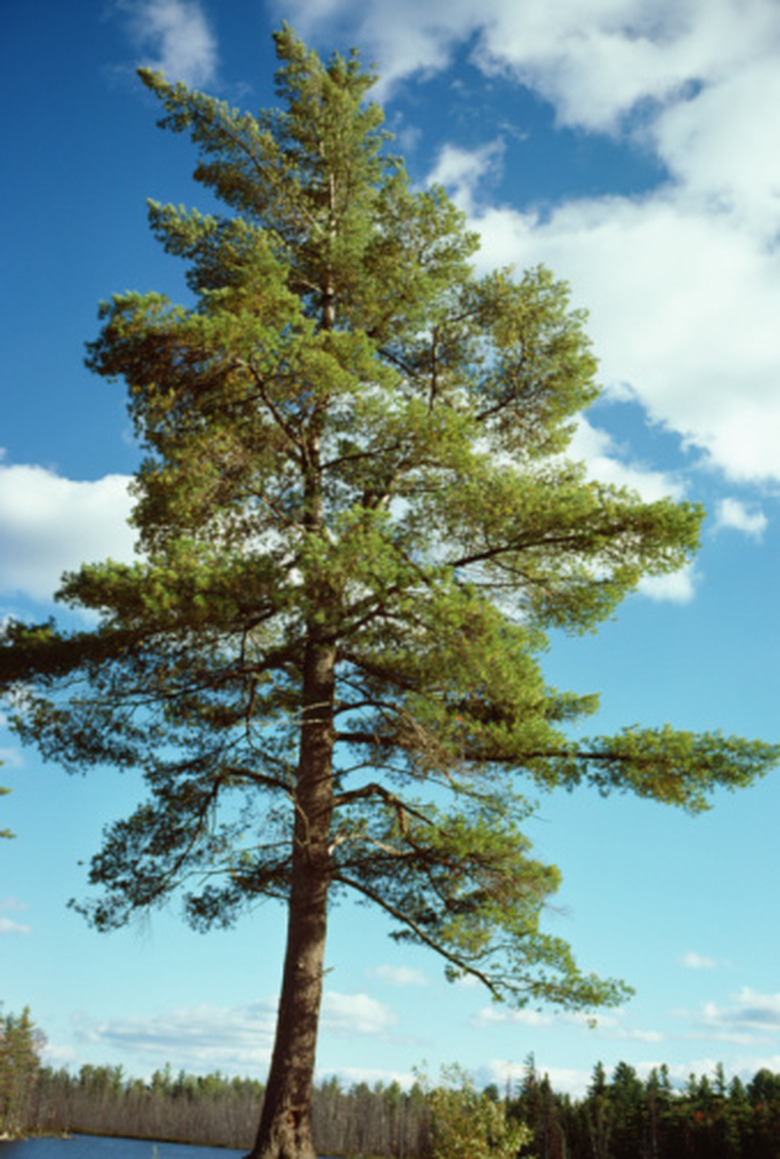Relationship Of Mutualism Between A Mushroom & A Tree
Did you know that trees talk to each other? How do they communicate without voices? Scientists believe trees exchange messages through mushrooms (fungi) living among their roots in a mutualistic relationship. These fungi form an intricate web of communication amongst tree roots in the forest, helping to distribute messages and nutrients between a wide network of interconnected trees. Some ecologists call this the "nervous system of the forest" or the "wood wide web," according to Harvard University.
What Is Mutualism?
What Is Mutualism?
According to Florida State College Jacksonville, mutualism is a relationship between two species where both species reap benefits from the association. Each species in a mutualistic relationship contributes something the other needs. In the case of a mutualistic relationship between a plant and an insect, the plant may provide food in the form of pollen, and the insect performs an essential function by moving pollen from one plant to the next, cross-pollinating members of the species.
There are two types of mutualism: symbiosis and non-symbiotic mutualism. In a symbiotic relationship, one of the species must be involved with the other to survive; the term for this is obligate. In some symbiotic relationships, both species involved depend on the association for their survival. In non-symbiotic mutualism, neither species is dependent upon the other for survival, but both benefit when they live together.
Mutualism is different from commensalism, a relationship where one species benefits and the other is unaffected. Another type of relationship between two organisms is parasitism, where one species benefits while the other is negatively affected by the association.
How Fungi and Trees Benefit
How Fungi and Trees Benefit
The mutualism between fungi and trees is symbiotic. This is because fungi cannot make their own food – the term for this is heterotrophic. Fungi depend on relationships with other species, either mutualistic or parasitic, for their survival. This mutualism is not obligate for trees, meaning that it is not necessary for them, but they benefit from it.
Mycorrhizal fungi are the types of mushrooms that form mutualistic relationships with trees, notes SUNY Cortland. They extend fine, thread-like structures called mycelia (singular: mycelium) among tree roots, extending the surface area of the plant below the ground.
These mycelia take up nutrient-rich sugars from the tree roots, which is important for their survival because they can't make their own food. The trees, who can make their own food trough photosynthesis, benefit from the relationship because the fungi provide essential nutrients like nitrogen and phosphorous through the roots of the plant. Mycorrhizal fungi also form a network for communication among trees.
What Trees Talk About
What Trees Talk About
As some of the oldest living organisms on the planet, trees must adapt to changing conditions in the environment, and their mutualistic relationship with fungi helps them to do this. Because they are rooted and immobile, they can't hide or run away from dangers like predators and diseases. Their mycorrhizal networks help trees to communicate messages about environmental stressors, signaling through chemicals that are sent through the fungi.
Trees send stress signals through their "wood wide web," alerting neighbors to impending dangers like pathogenic bugs, toxins and deforestation. Although neighboring trees can't uproot and get away from oncoming dangers, they can release hormones and chemicals to defend themselves from some predators.
Mycorrhizal networks also help trees develop associations with other members of their species, sharing nutrients and messages through a behavior called "kin recognition." These underground networks also allow for communication between different tree species, like birches and firs.
While humans are still deciphering the complex language of trees and the complicated relationship between trees and fungi, one thing they know is that this mutualism has helped both organisms adapt to changing conditions in the environment. The resilience and longevity of both trees and mycorrhizal fungi is due in part to this symbiotic relationship.
Cite This Article
MLA
Sloane, Christina. "Relationship Of Mutualism Between A Mushroom & A Tree" sciencing.com, https://www.sciencing.com/relationship-of-mutualism-between-a-mushroom-a-tree-12541129/. 30 September 2021.
APA
Sloane, Christina. (2021, September 30). Relationship Of Mutualism Between A Mushroom & A Tree. sciencing.com. Retrieved from https://www.sciencing.com/relationship-of-mutualism-between-a-mushroom-a-tree-12541129/
Chicago
Sloane, Christina. Relationship Of Mutualism Between A Mushroom & A Tree last modified March 24, 2022. https://www.sciencing.com/relationship-of-mutualism-between-a-mushroom-a-tree-12541129/
